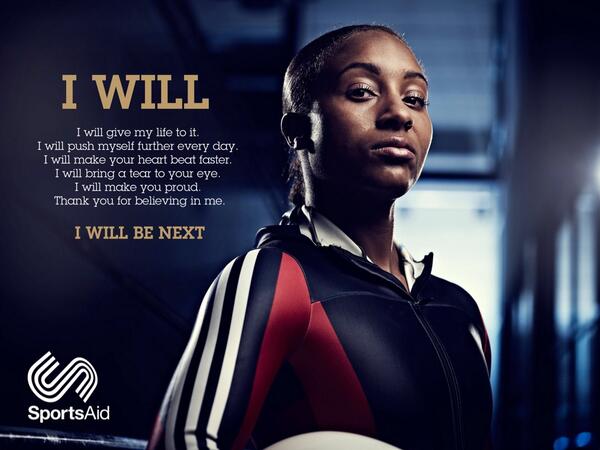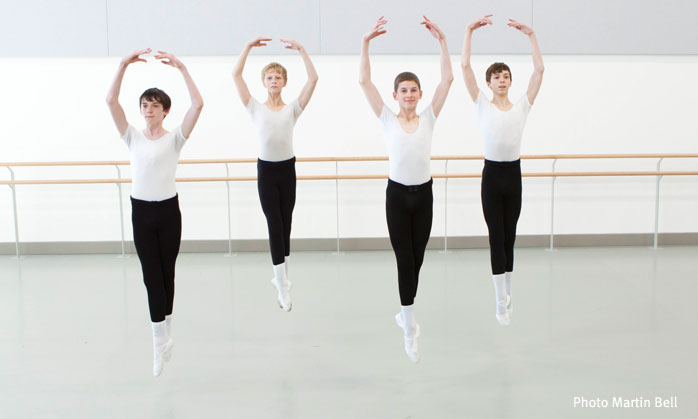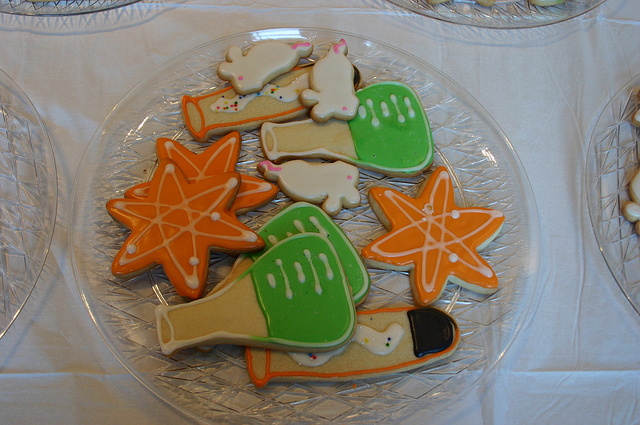The British Skeleton Team – Sliding to Victory
How would you like to slide down a very steep and winding track of ice on something very similar to a tea tray at around 140km per hour? Yes, no, maybe. Well, there are people out there who can and do want to. And what’s more, they’re really rather good at it.
Alongside Bobsleigh and Luge, the Skeleton is one of three sliding sports that take place on artificially refrigerated ice tracks. It’s a really white knuckle experience as each skeleton athlete pushes their sled one handed away from the start before lying down with their face first as they travel the track, using their shoulders, knees and toes for steering.
Move Over Girls, and Make Space for Ballet for Boys
DANCE is for EVERYONE!
When did people begin to dance? No one knows for sure, but dancing has been around for as long as there have been people!
Dancing provides people with a wonderful tool to express their emotions and thoughts. They can communicate to others what they are feeling and their state of mind. Dancing connect people. All around the world, there is dance. Over many centuries, every country and culture has developed typical dances of its own. They are part of peoples’ traditions.
Aside from these cultural dances, dance developed for performance.
People have always passed on their old dances from generation to generation and always enjoyed dancing them. In addition there were also modifications, changes, new steps and other dance moves. More dances evolved.
We will, in this series of articles, look at the different styles of dance and find out how you can get involved. We shall start with BALLET and ask the question ‘Is ballet for boys too?’
What is ballet?

Ballet was created in the courts of Italian princes about 500 years old. A royal dance school was later founded in France by Louis XIV in 1661.
Many positive benefits are associated with learning the art of ballet. Besides learning the traditional techniques of ballet, ballet lessons can also nurture a positive self image. Ballet teaches skill, grace, poise, self-discipline and confidence. If your dream is to become a dancer, you must practice a lot in order to master the many challenging poses and steps of ballet. You will begin by learning the rules and traditional techniques of ballet.
Why should I learn Ballet?

Ballet lessons have three major benefits. First of all, a dancer expands their vocabulary through learning the French names of the steps and hearing the musical terms. Secondly, they develop their musicality and rhythm through coordinating their bodies to the music. A third benefit is that memorising new steps and dances improves the memory of young ballet students.
So, Ballet makes you smart!
Dance offers a greater range of motion, coordination, endurance and strength than most other physical activities. If you have an interest in any kind of future in dance, you’ll need ballet because that’s where you learn the basics. But even if dance isn’t the ultimate goal, ballet lessons improve posture, flexibility, coordination, strength and grace. They also provide an opportunity for you to be active regardless of the weather outdoors.
So, Ballet makes you fit and strong! This IS looking promising.
Ballet lessons can also be good for a kid’s development by improving their social skills. It’s been suggested that ballet classes encourage kids to form new friendships. Dancers also get to interact with positive role models in their dance teachers. In ballet class, you need to follow directions closely and discipline yourself to not run around the space of the dance studio! Your confidence will grow as you develop new skills and perform in front of an audience. My dancers love to perform for their friends and family. After working hard all year, my students feel a sense of accomplishment while performing on stage in awesome costumes.
So, Ballet can make you a more confident person! What’s not to like?!
Is Ballet just for girls…? No, definitely not! More girls than boys do ballet, but the ballet that girls do is very different from ballet for men and boys. Male ballet dancers have to be strong and athletic. When scientists tested male ballet dancers against sportsmen, they found that the dancers were fitter and able to keep going for longer. Lots of sports clubs invite Ballet teachers in sometimes to give the players a lesson! It’s great for their balance, agility and core strength.
So, Ballet is great for boys too! Sign me up.
Naomi is an AISTD trained dance teacher, has been teaching since 1994. As well as a long career in dance schools, she has also been Head of Dance in a sixth form college. She runs a small, encouraging dance school offering classes for children and young adults in Ballet, Tap, Jazz and Linedancing, as well as Dancing Hands which uses songs and signing to introduce Ballet to pre-school dancers. The school is based in Bassingbourn and Litlington, on the border of South Cambridgeshire and North Hertfordshire, UK. Naomi has a particular love for working with children and young adults who have learning difficulties – dance is for everybody! Find out more on www.dance-matters.co.uk
Why DO Kids Want to Play Minecraft?
Sitting back, ready for another interesting and rather aggressive night on COD (Call of Duty), I launch my dashboard to see the usual suspects all gathered playing the latest shoot ’em ups.
Except one. Looking again, I notice my 13-year-old brother Jimbob is playing a game I’ve never seen – MINECRAFT.
After much persuasion and explanation “COME ON BRO, BUY IT PLEASE, YOU BUILD STUFF”, I decide to purchase it, in order to support him in our mum’s campaign to play online more responsibly.
The game launches and all I see is blocks. Have I got the right game? Where are the graphics?
Wandering mindlessly around, past trees, rivers and spiders, until Harvey Jimbob asks me to come to his house. Here’s the strangest part: he built it.
Awesome Science Resources for Kids
Where else can you find great Science Resources for Kids? You can browse our archives here on Jump! Mag or you can check out the following sites.
We will update this list in the coming months, and will concentrate on resources you can access online – lectures, TV Shows, YouTube channels, online archives, websites and blogs with science tutorials so that you can roll up your sleeves and get stuck into science.
We will update this list regularly, so if you have something cool to add, let us know.
SPARXX
Sparxx is an initiative bought to you by the Women’s Engineering Society (WES).
Their aim is to bring you all the latest news, views, events, opportunities, careers, interesting stuff, fun stuff and freebies to help girls find inspiration for future careers. Sign up for their newsletter here.
The Royal Institution Christmas Lectures
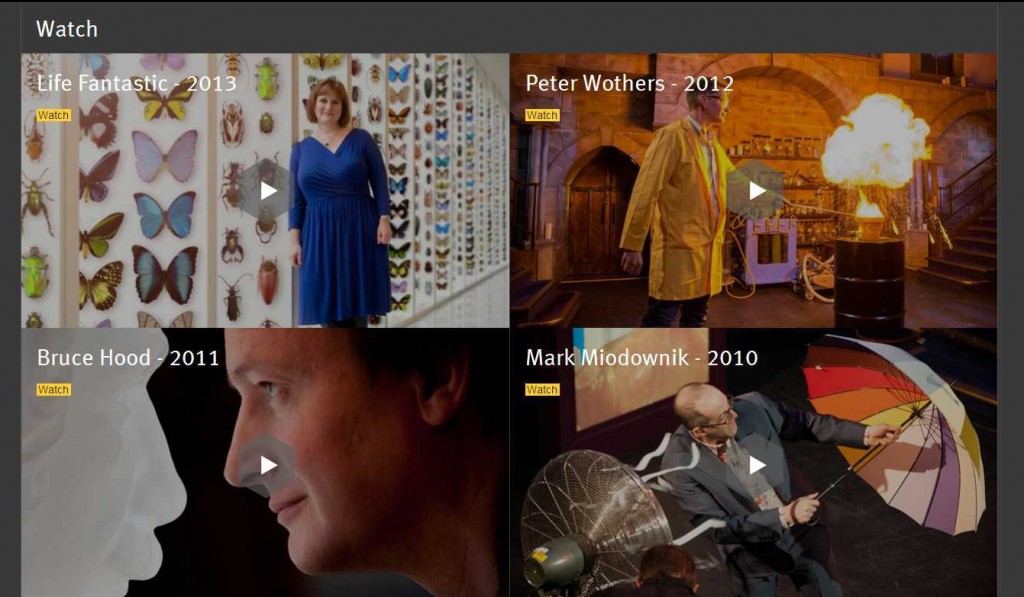
The CHRISTMAS LECTURES® are entertaining and informative science events for young people, broadcast on UK television every year. You can watch them online here. Prepare to be amazed
UPDATE
The Royal Institution have just launched Experimental, a series of YouTube videos with great and simple experiments for parents and children to try at home. Find their YouTube Channel here.
Zooniverse
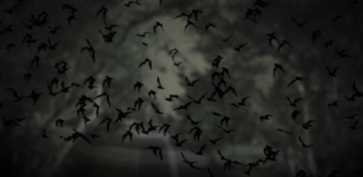

Real science, online – The Zooniverse is home to the internet’s largest, most popular and most successful citizen science projects. You can choose to help researchers characterize bat calls, or explore Mars, without leaving your house.
Crash Course
Six awesome courses in one awesome channel: John Green teaches you US History and Hank Green teaches you Chemistry. Check out the playlists for past courses in World History, Biology, Literature, and Ecology
Bill Nye the Science Guy
Bill Nye is a scientist, engineer, comedian, author and inventor. His mission is to make science fun, and help people understand the science that makes our world work. Here are the Home Demos, the experiments you should try at home sometime. Keep clicking around and you’ll find the Episode Guides.
EdHeads
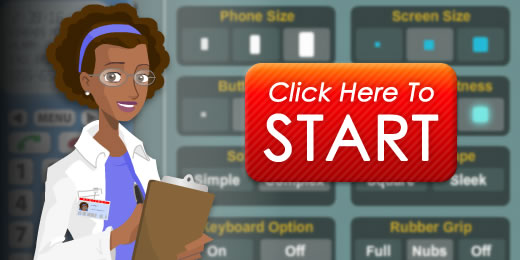
Edheads is an online educational resource that provides free science and math games and activities that promote critical thinking. You can design a mobile (cell) phone, repair a weakened aorta or learn about simple machines, and much more.
Science Projects for Kids
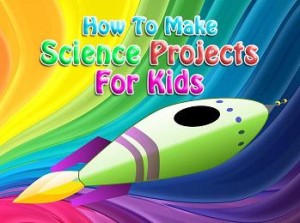
This is a site that links to lots of other sites – we loved the Amusement Park Physics – design your own roller-coaster but be careful because if you get the science wrong… DISASTER!
Silvia’s Show
Silvia is a young girl from California, USA and she’s been making Super-Awesome webshows on making cool stuff since 2010. She demonstrates science experiments, and great craft projects. You’ll never be bored, when Silvia is around!
NASA
The kids pages on Nasa are awesome, and that is before we get to the videos of ELMO at NASA. Science and Sesame Street. It doesn’t get much better than this.
Veritaseum
Veritasium is a science video blog featuring experiments, expert interviews, cool demos, and discussions with the public about everything science – these are at times more advanced, but well worth a look.
SciShow
We love the short and snappy servings of science from the SciShow team.
Minute Physics
We just had to include this one, as the solar system explanation is so brilliant even our science dunce editor understood it!
Engineering is Elementary
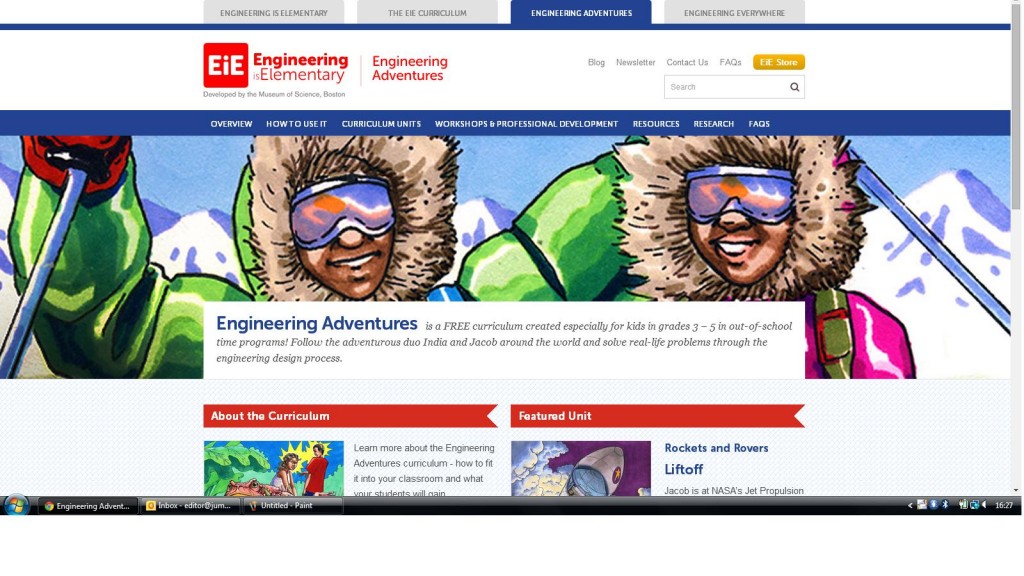
Engineering is Elementary is a project of the National Center for Technological Literacy at the Museum of Science, Boston (MOS). They have fantastic resources for teachers and home-ed families, on a range of topics. Some of the content is free to use, and the teaching guides and stories can be purchased on the site.
Further resources
The National Science Teachers Association has a great list of books about science
National Geographic is a great website with a huge range of articles and fun stuff
Cool music and science from They May Be Giants and the Here Comes Science CD
Woodlands Resources Science for educational and fun activities
How Stuff Works – well, just that really
This is a bit of a niche Science subject, but really cool – Skateboarding Science
If you like computers and want to learn how to make your own programmes, BBC had this cool game toolkit so that you can make your own games and Code.org can teach you to code, as can Scratch
If your parents are on Twitter, get them to follow @realscientists – a rotational twitter account featuring real scientists, science writers, communicators and policy makers talking about their lives and their work. Tweeters from different fields of science and science-related fields.
How To Grow Your Own Geek is a podcast created to share a love of geeking and parenting, and to provide advice on how to combine the two. Check out their Science and History Podcasts for Kids
Coding Resources by DeVry Bootcamp has plenty of interesting resources for older or more advanced students.
